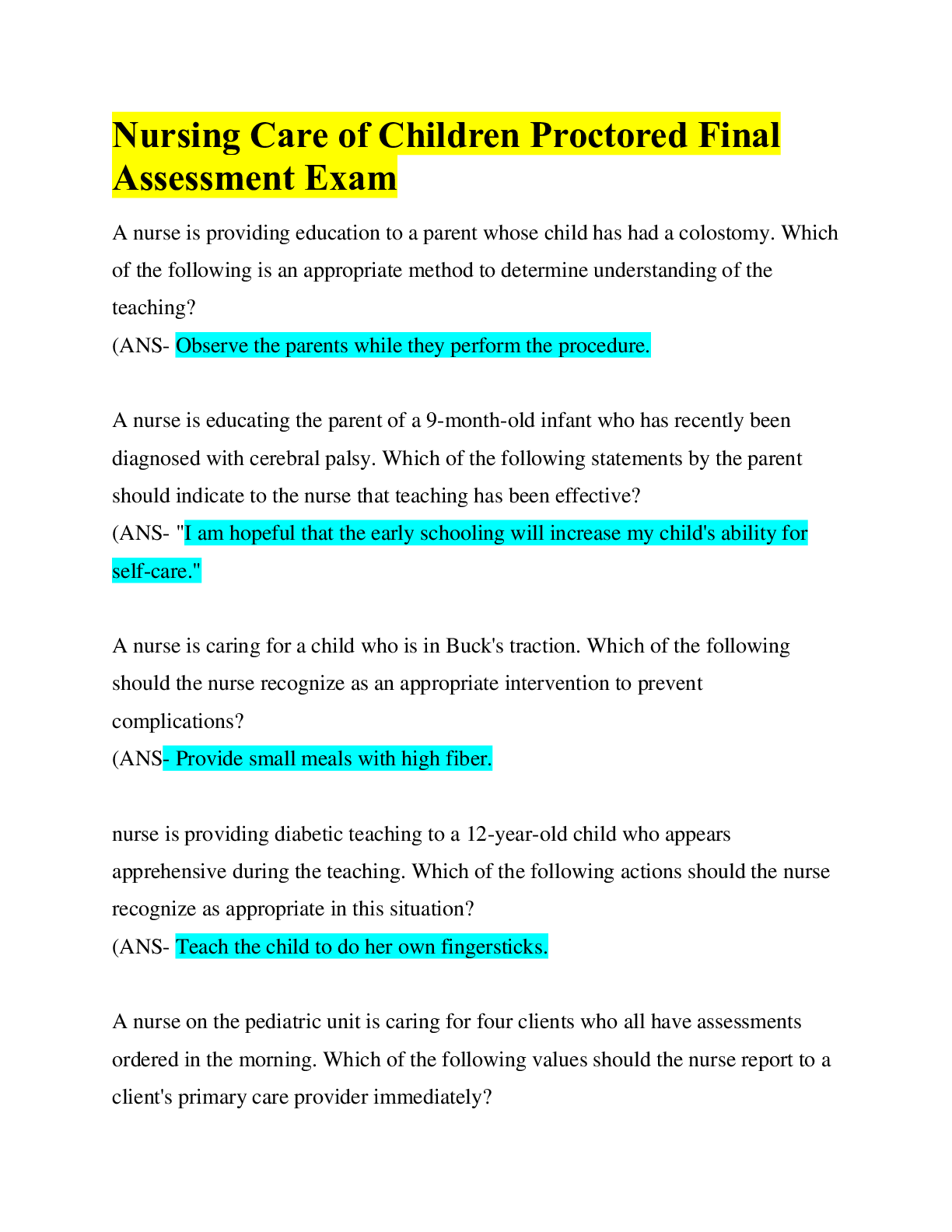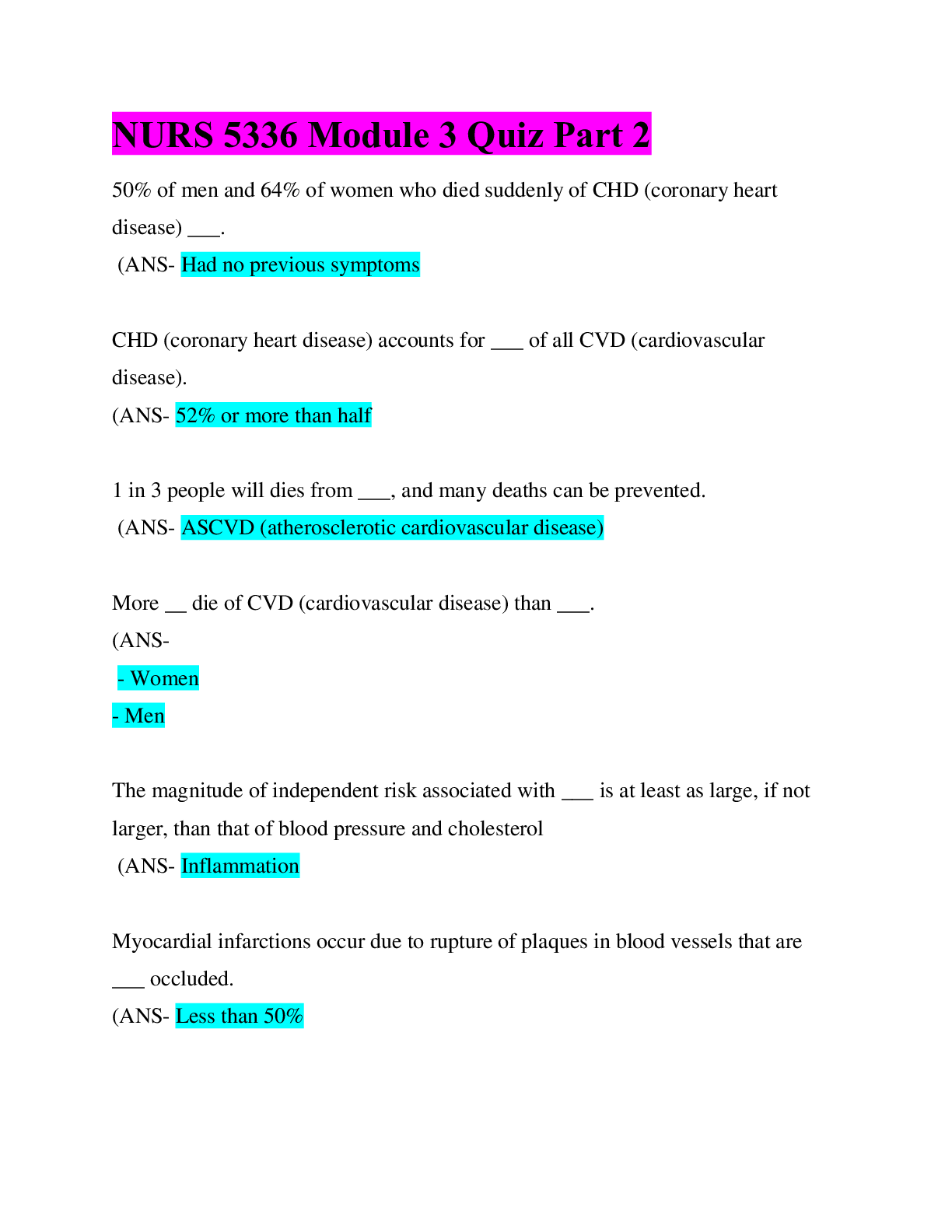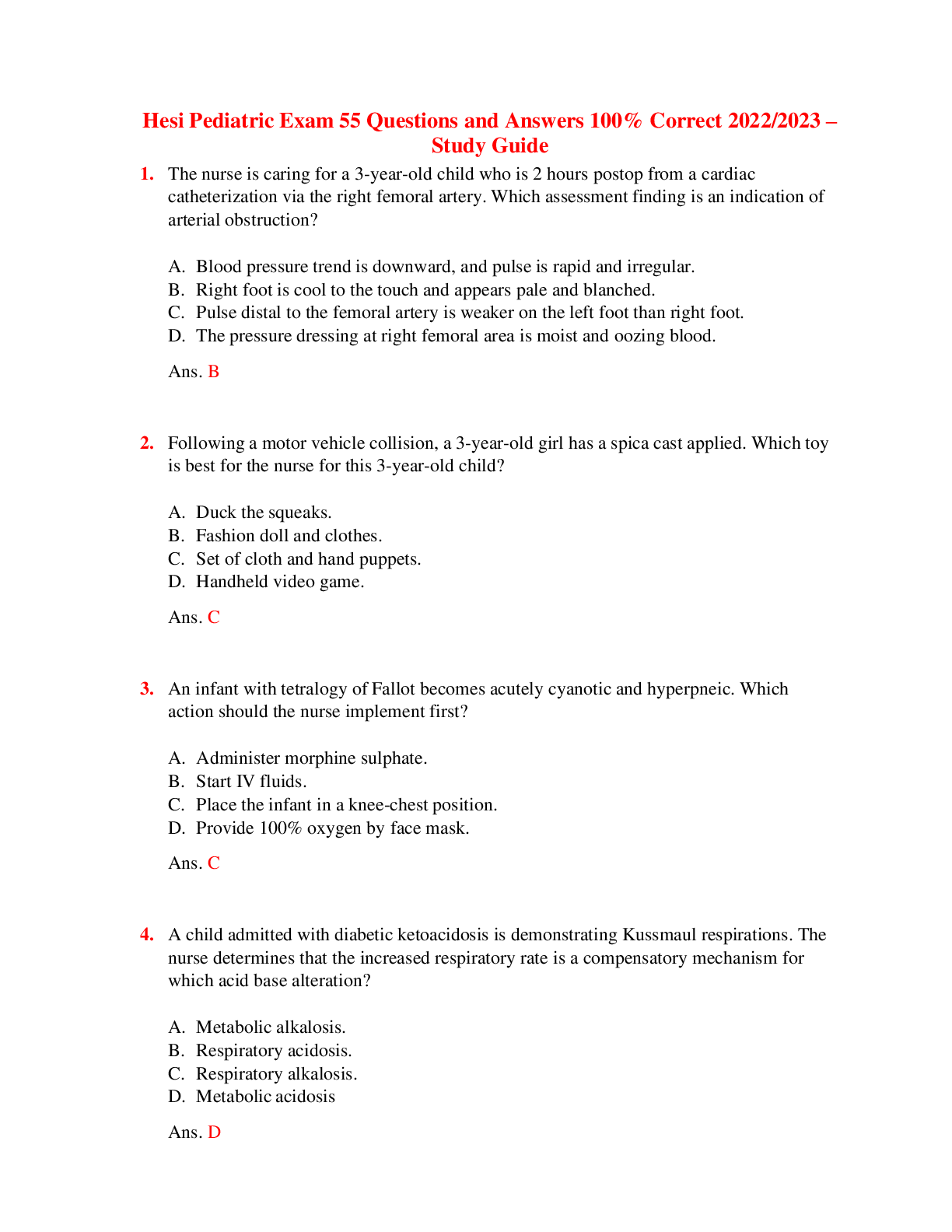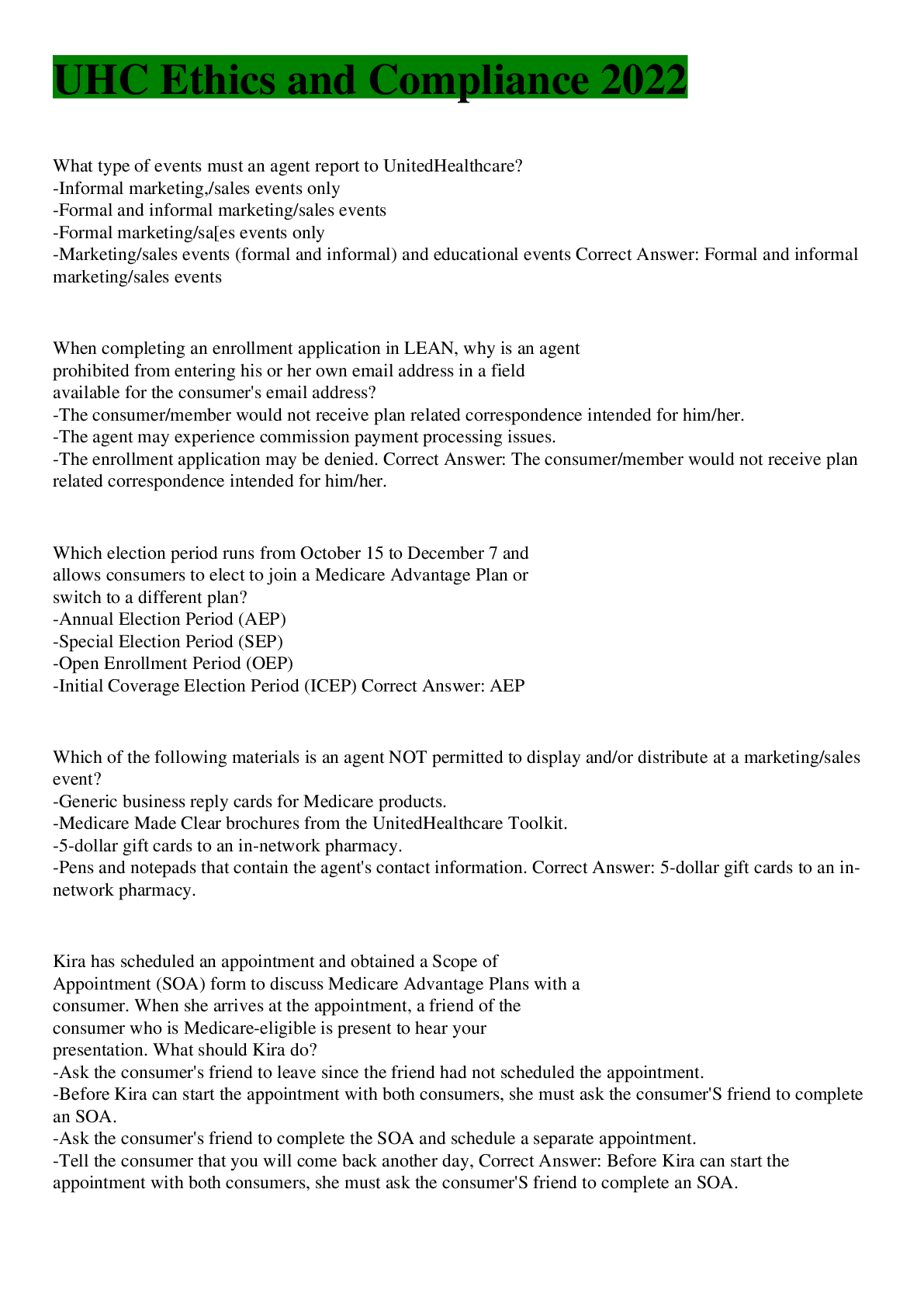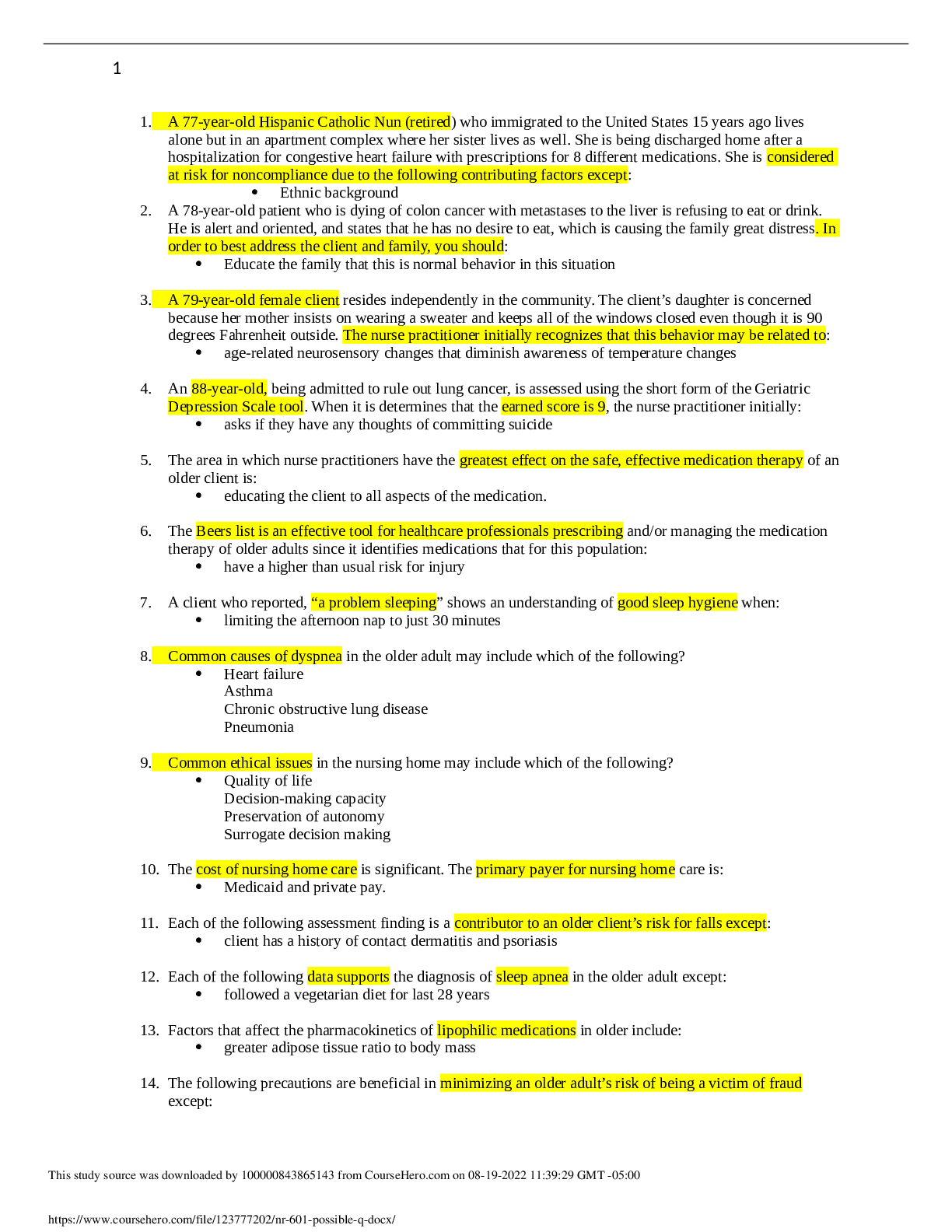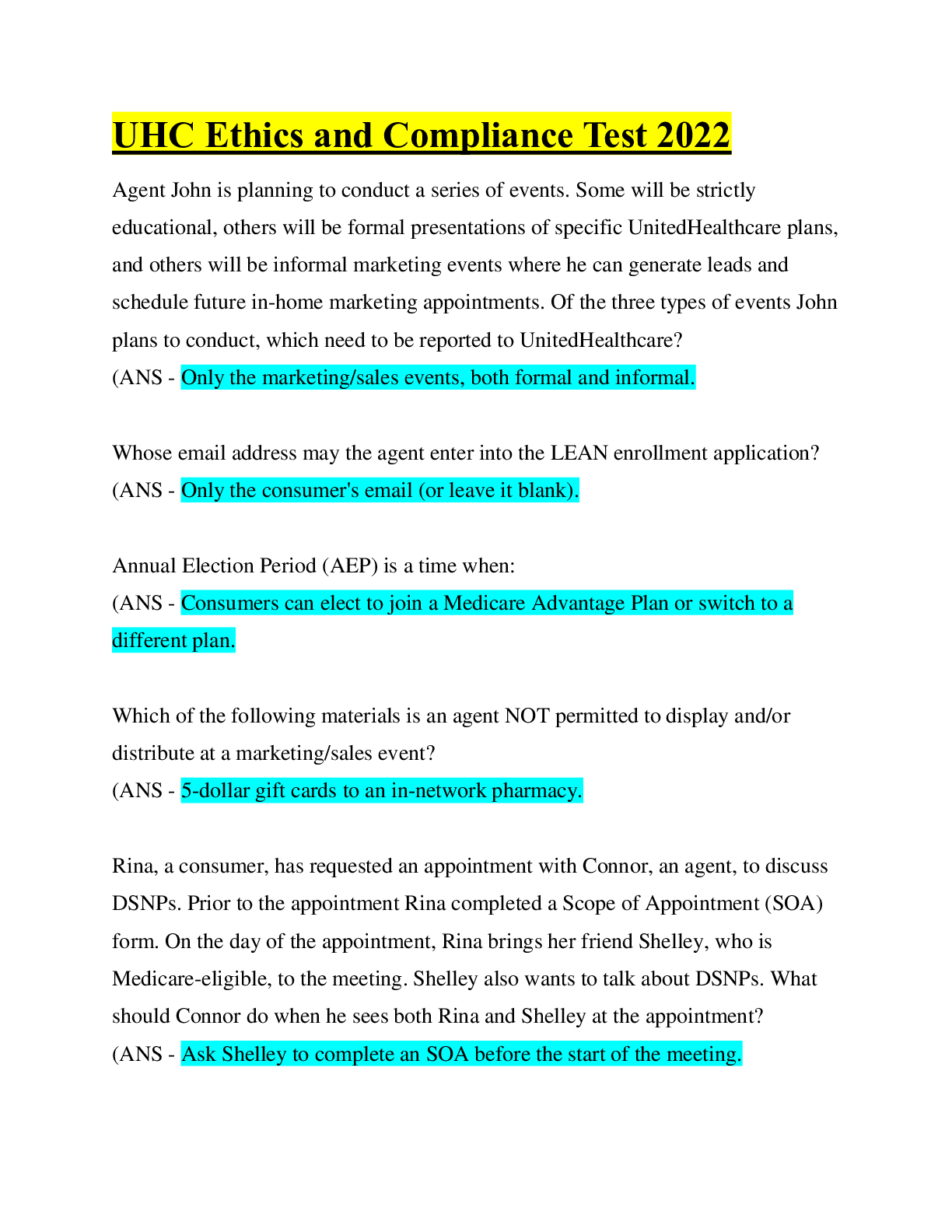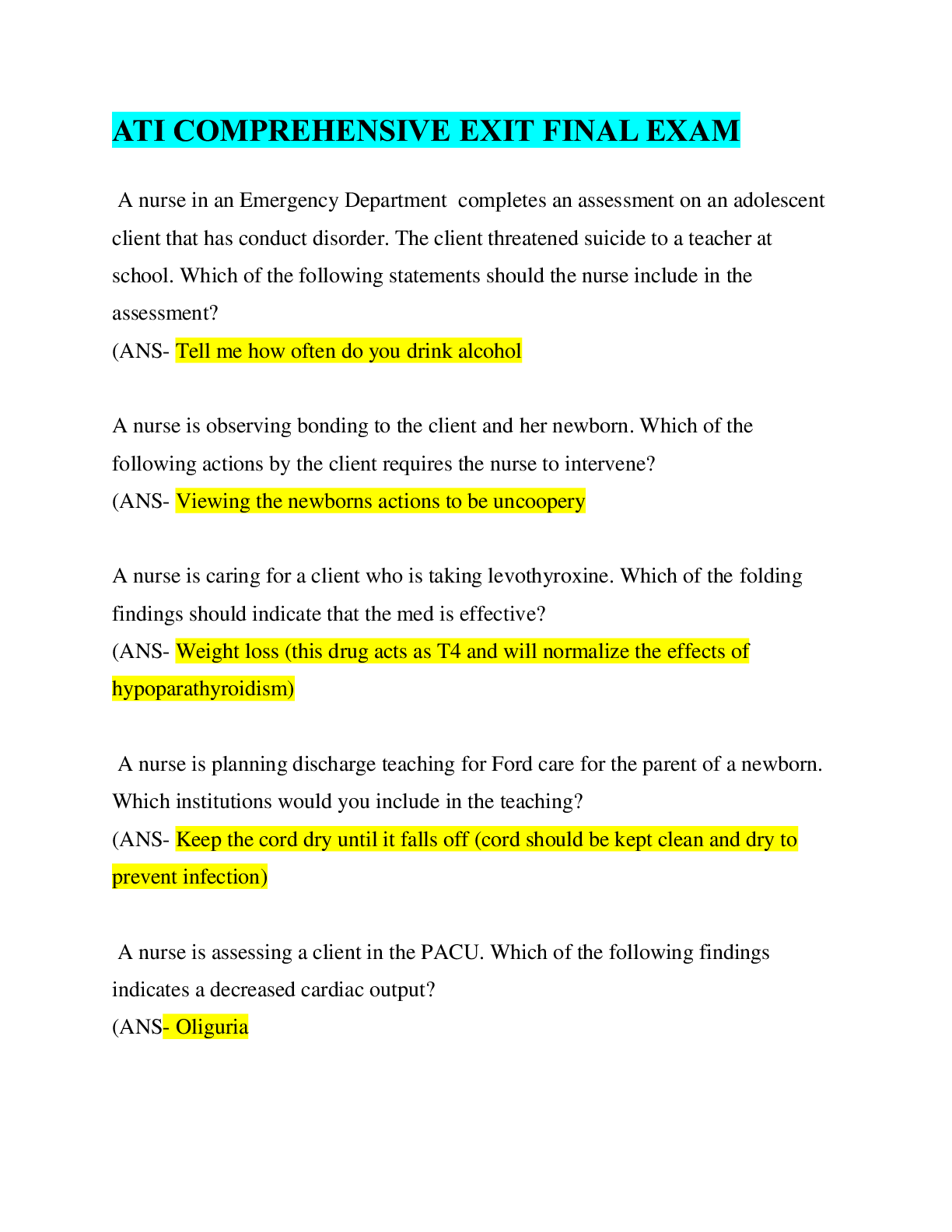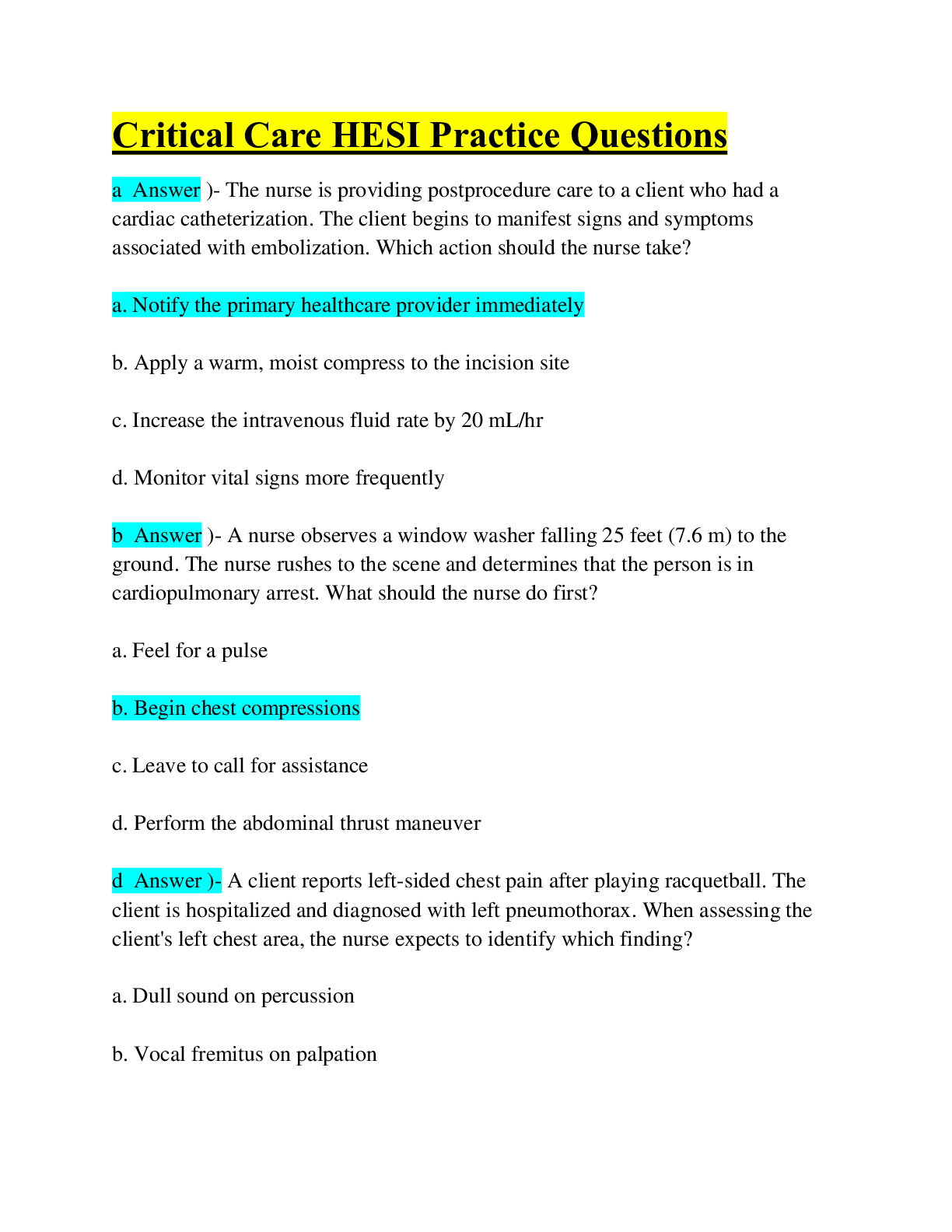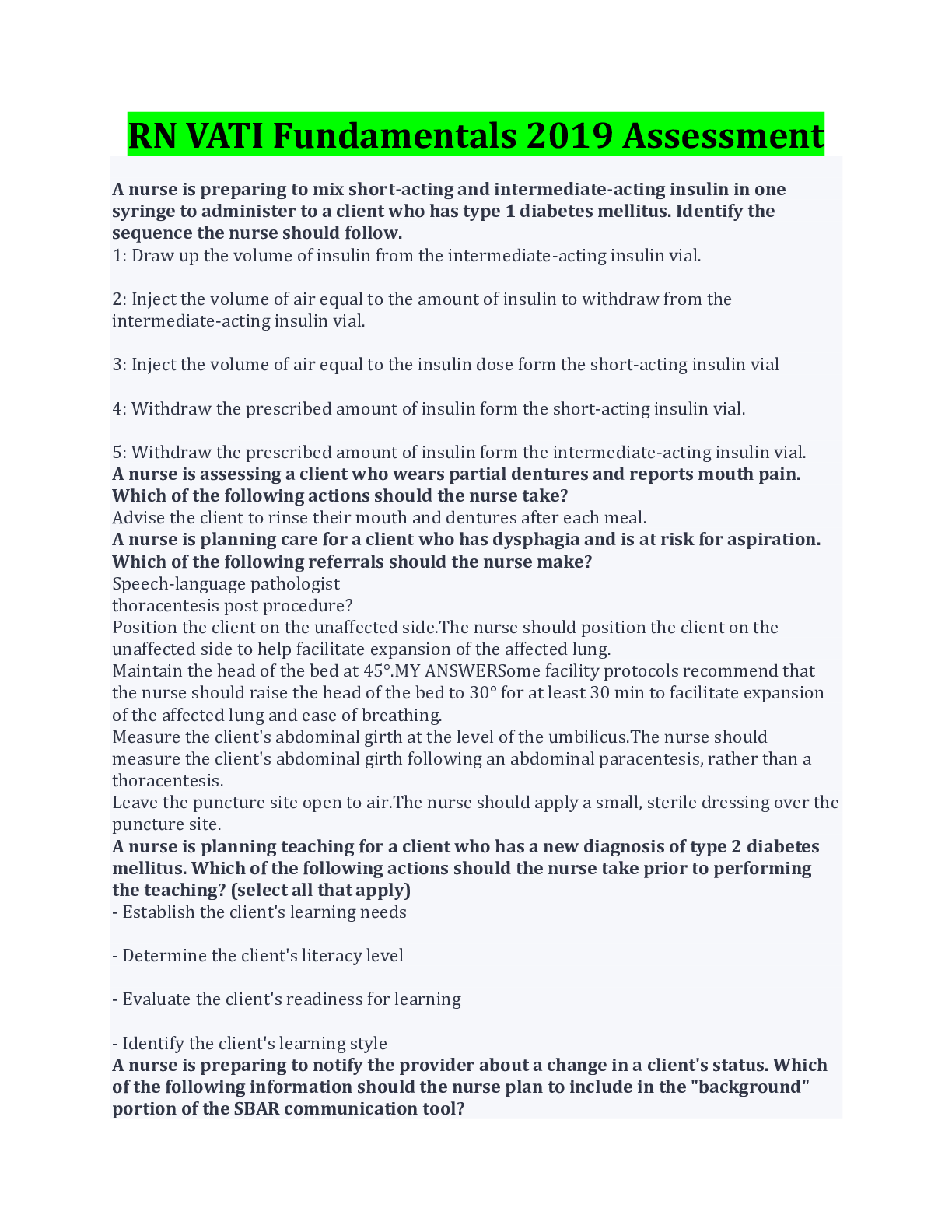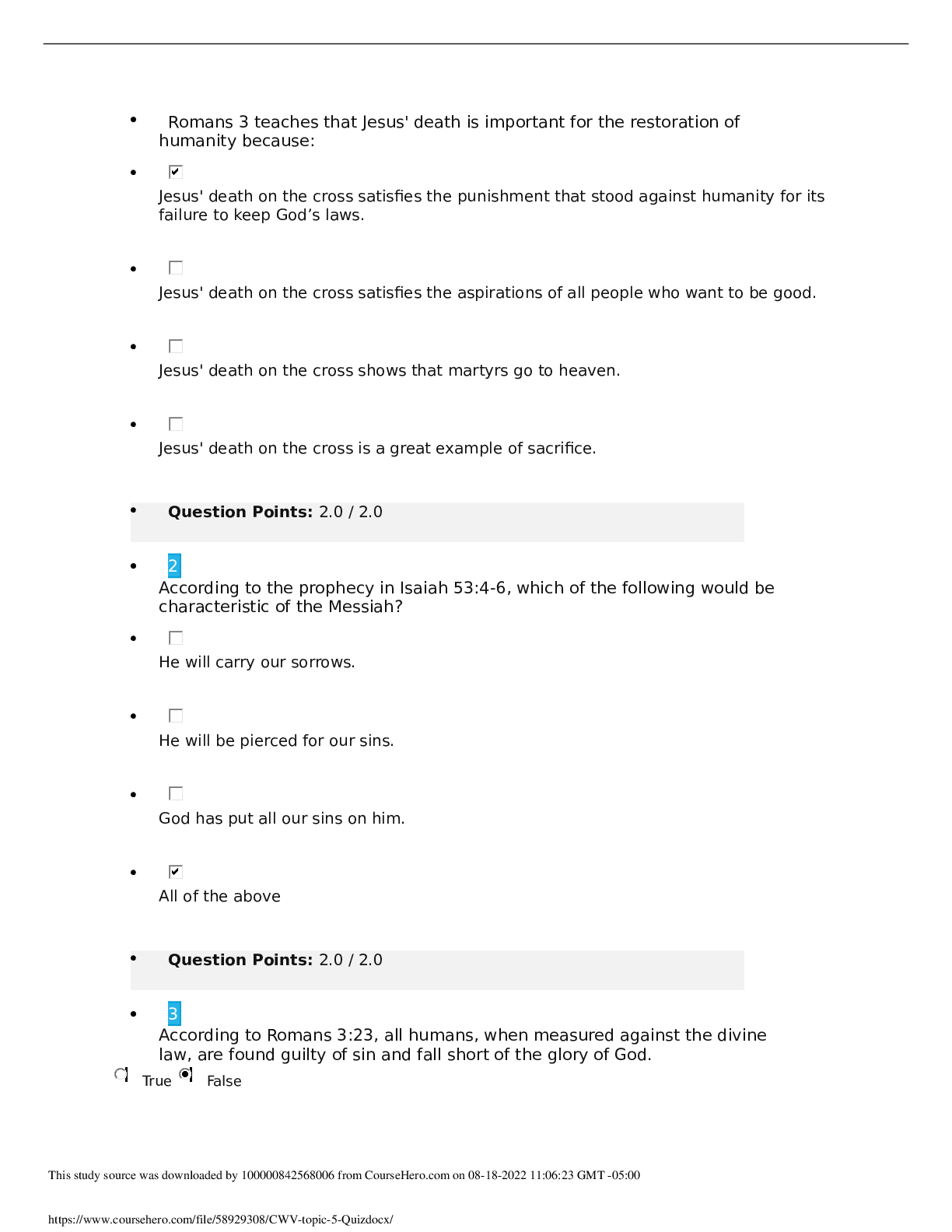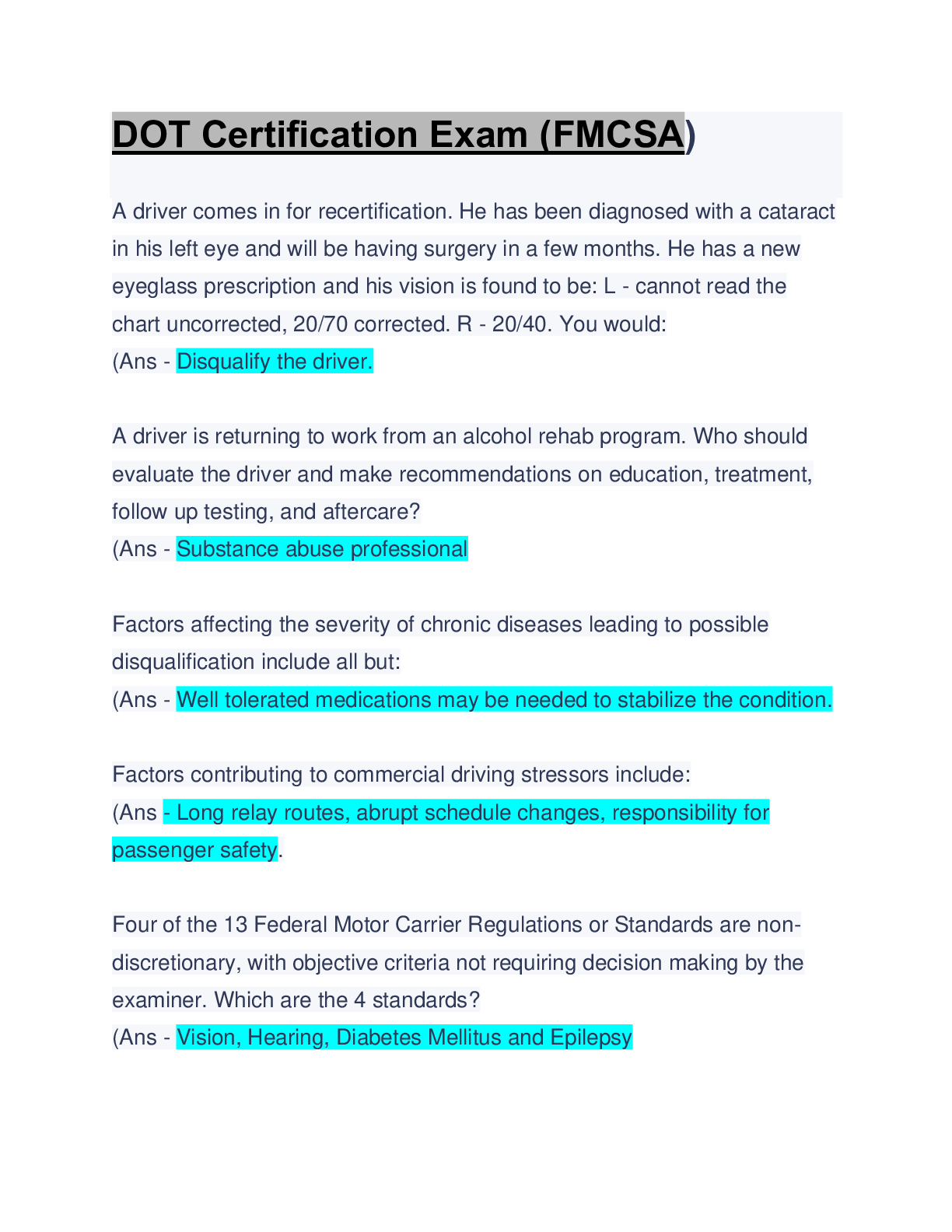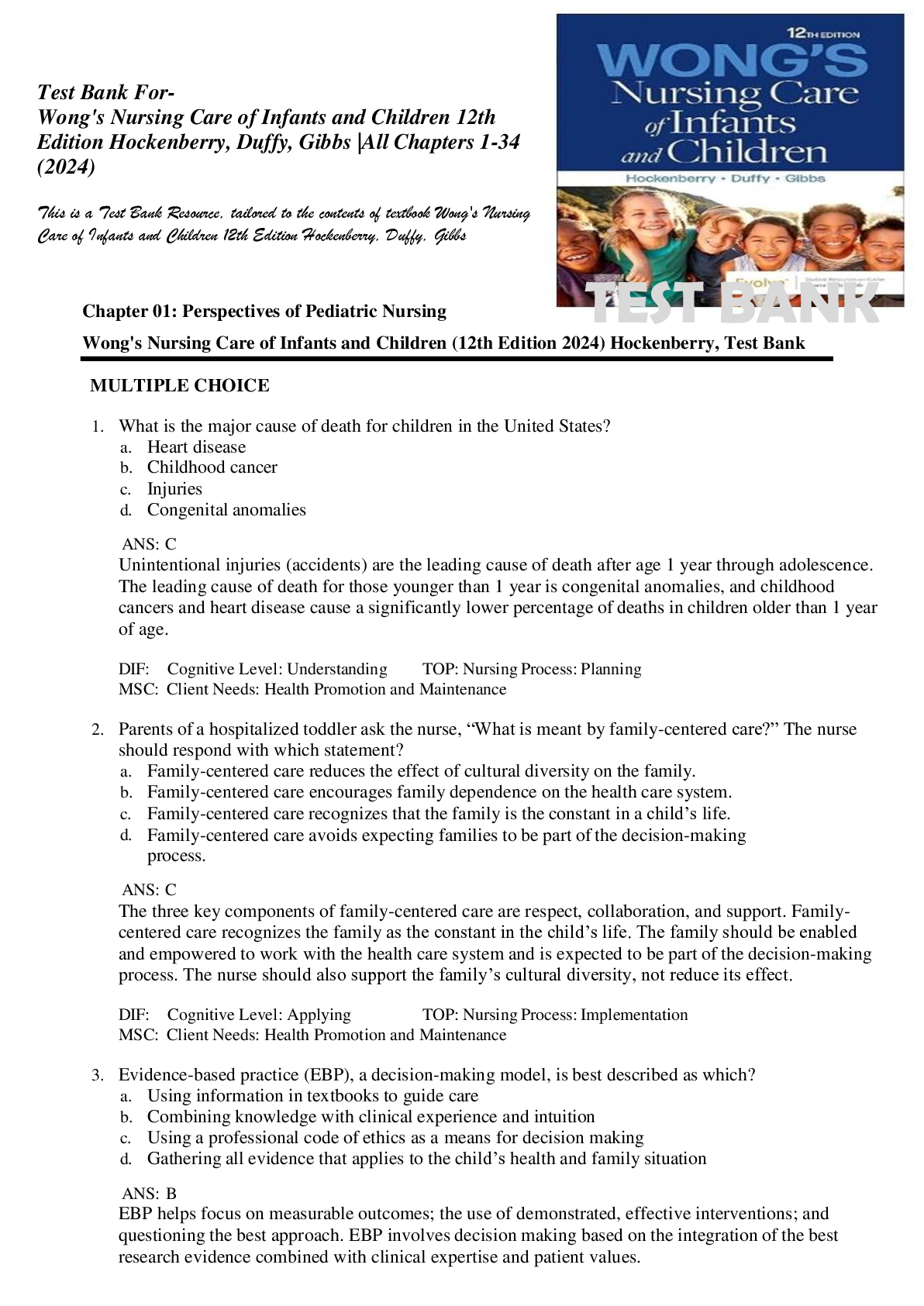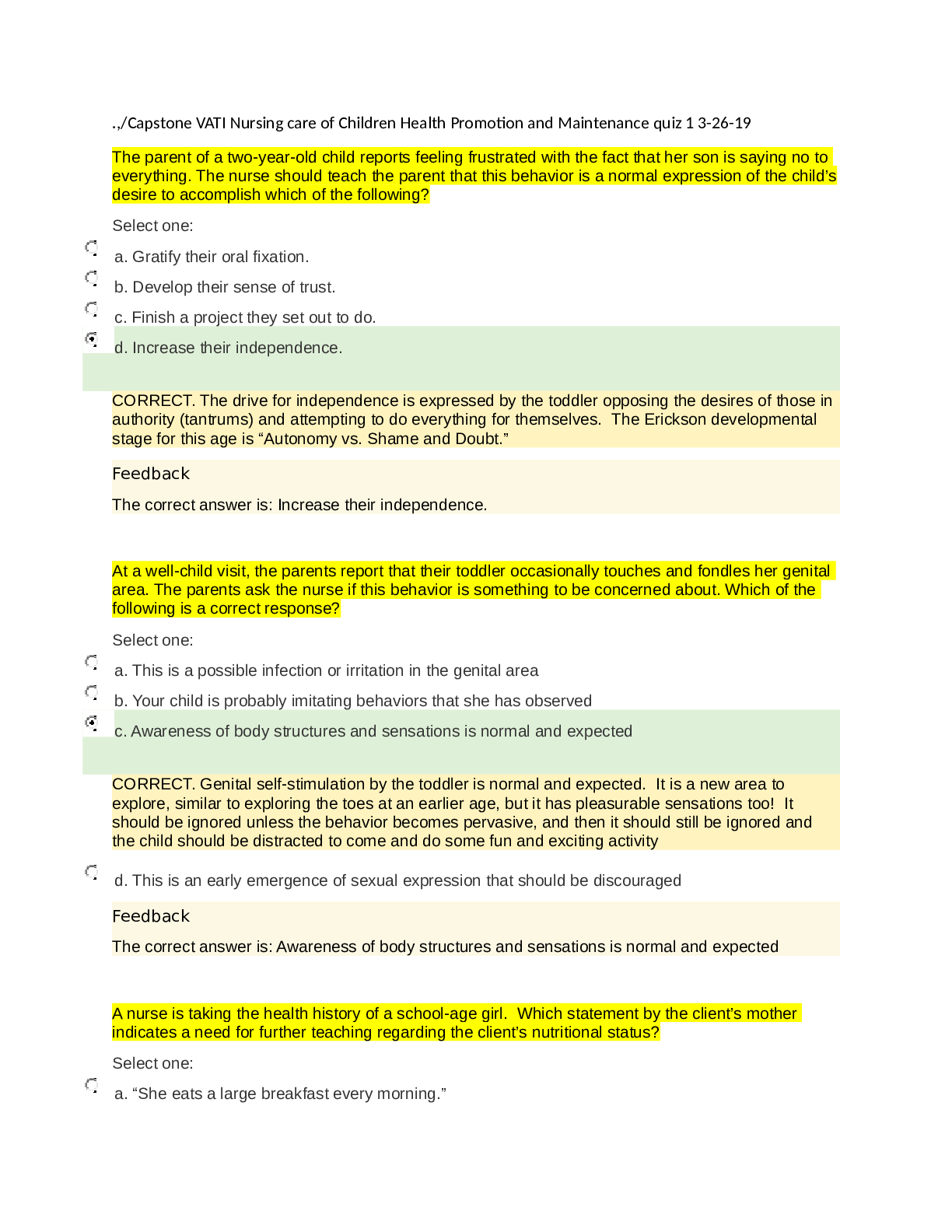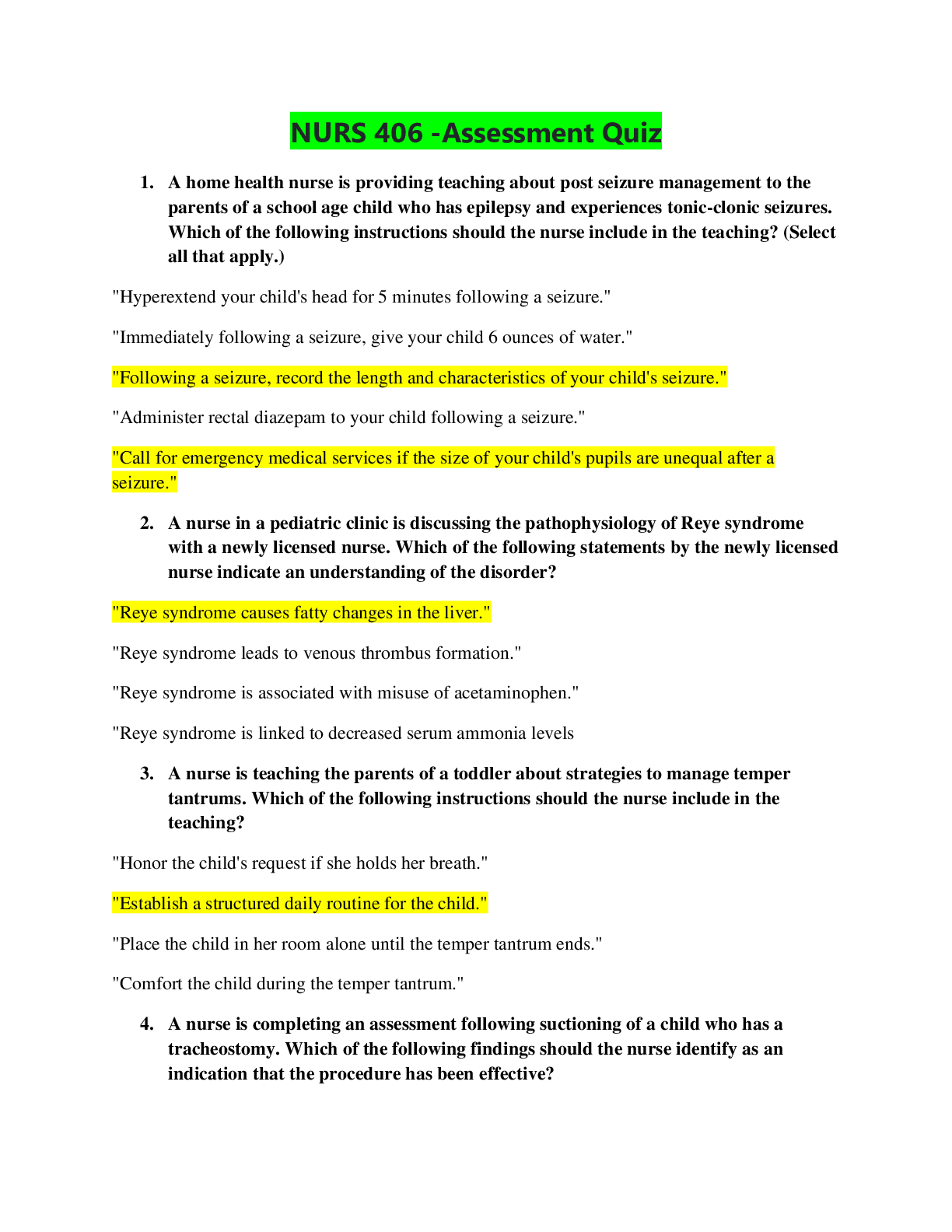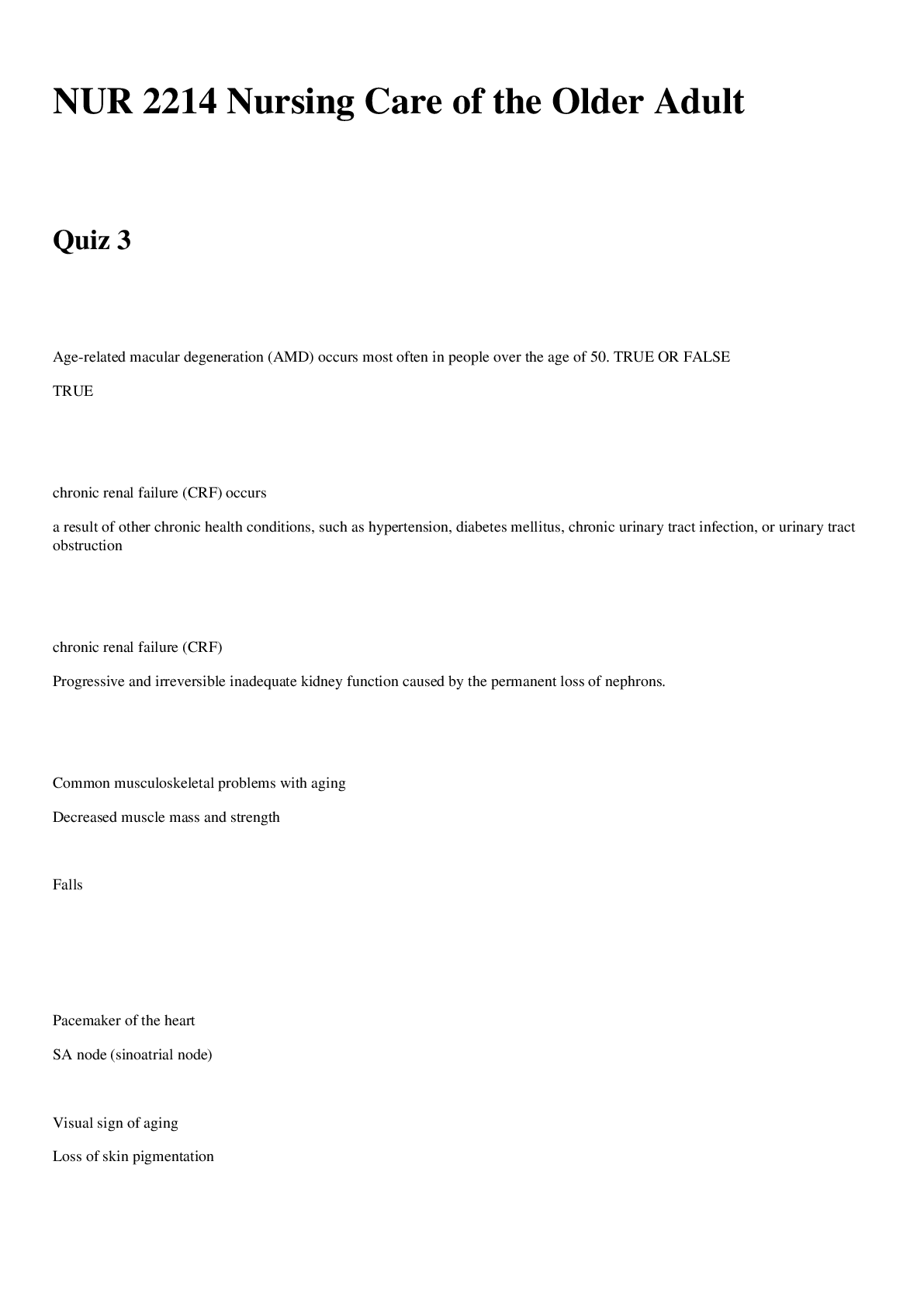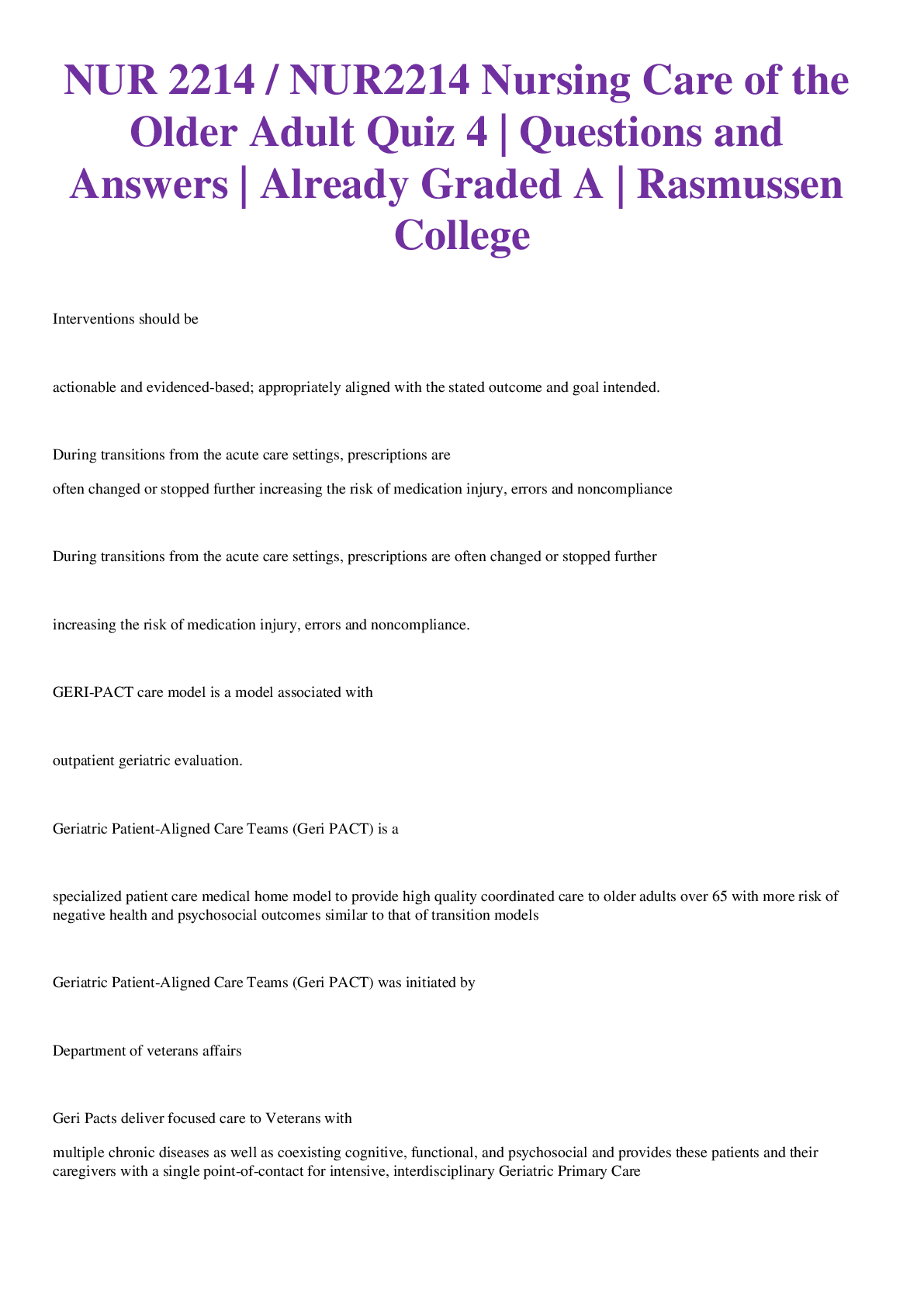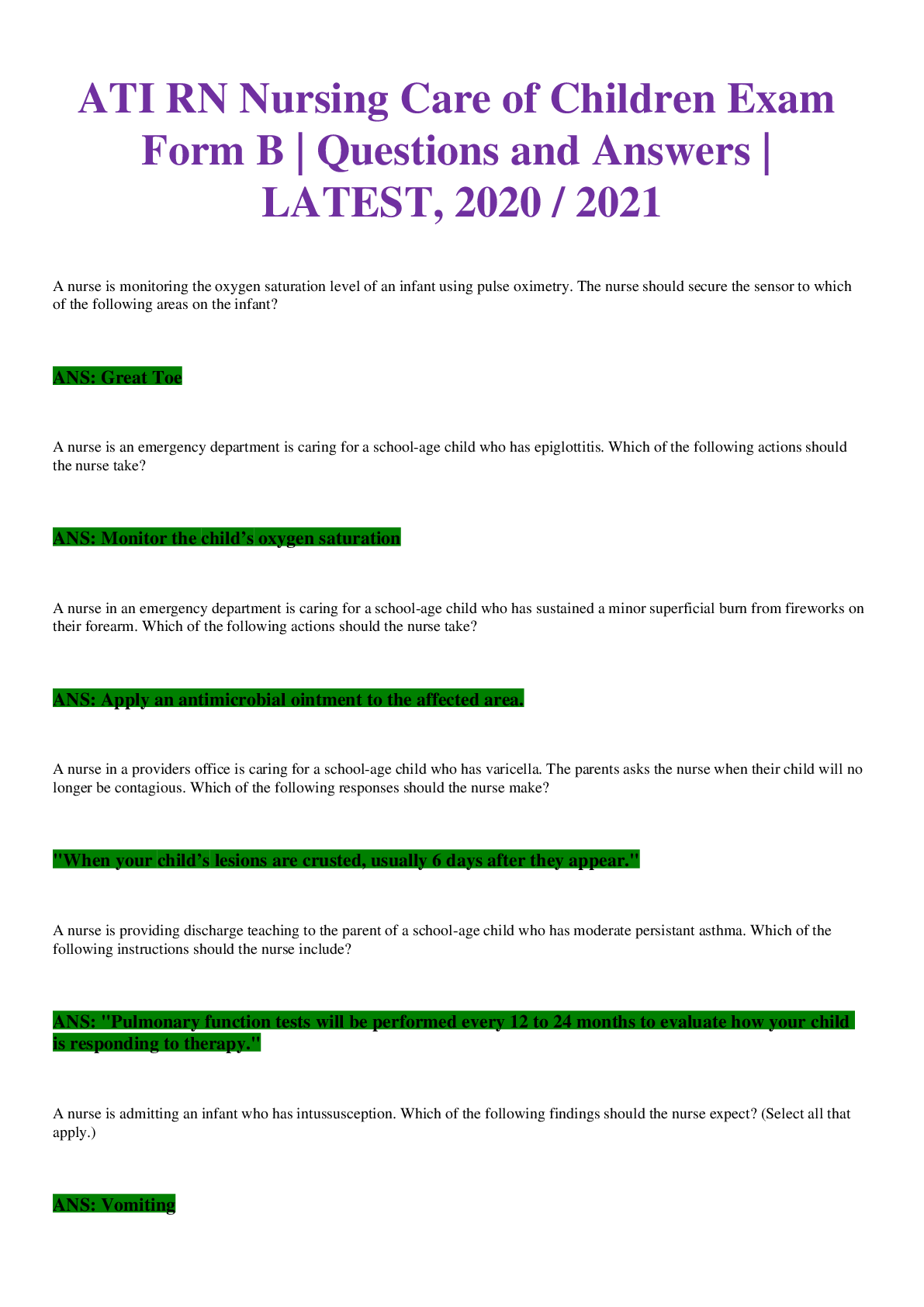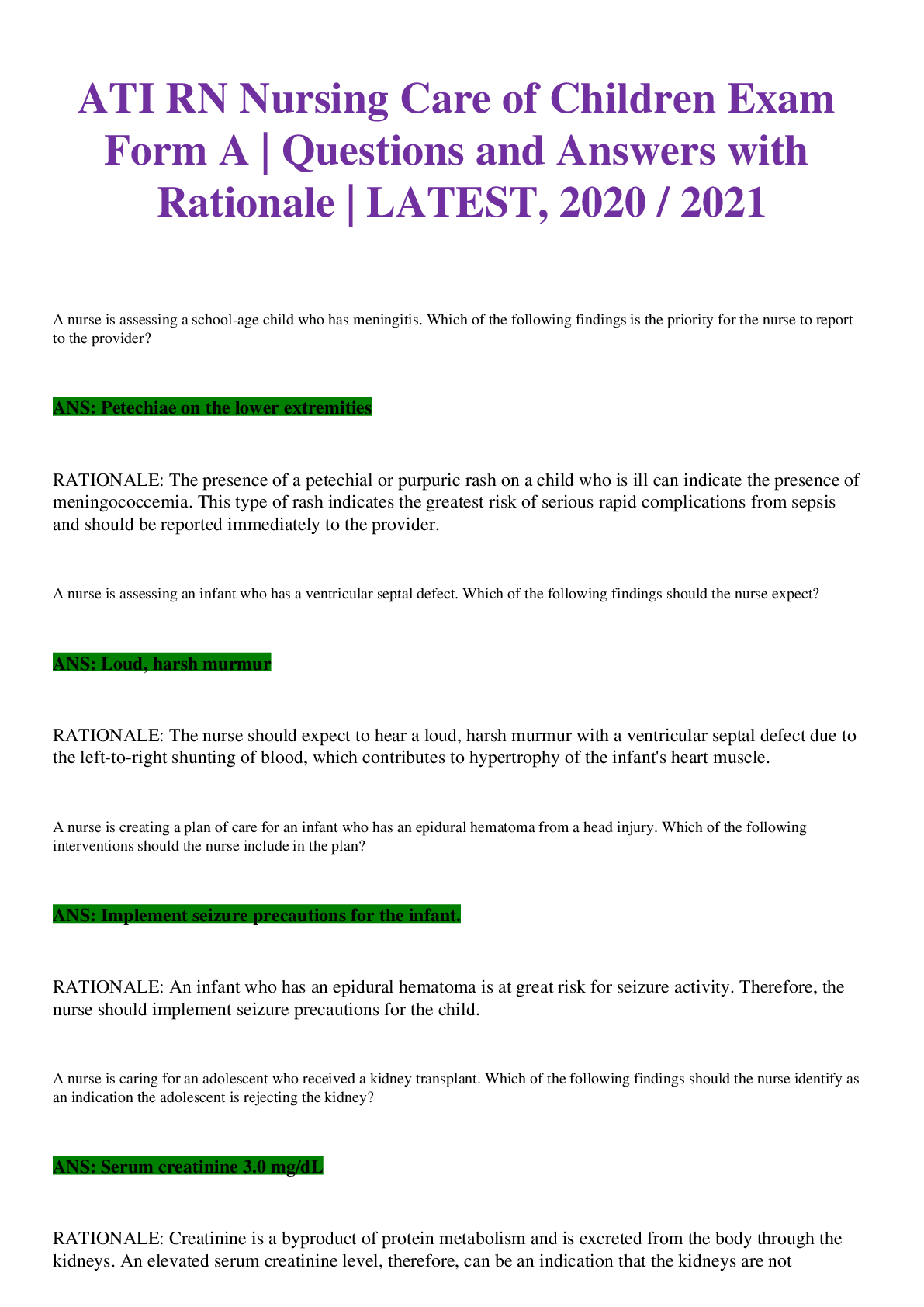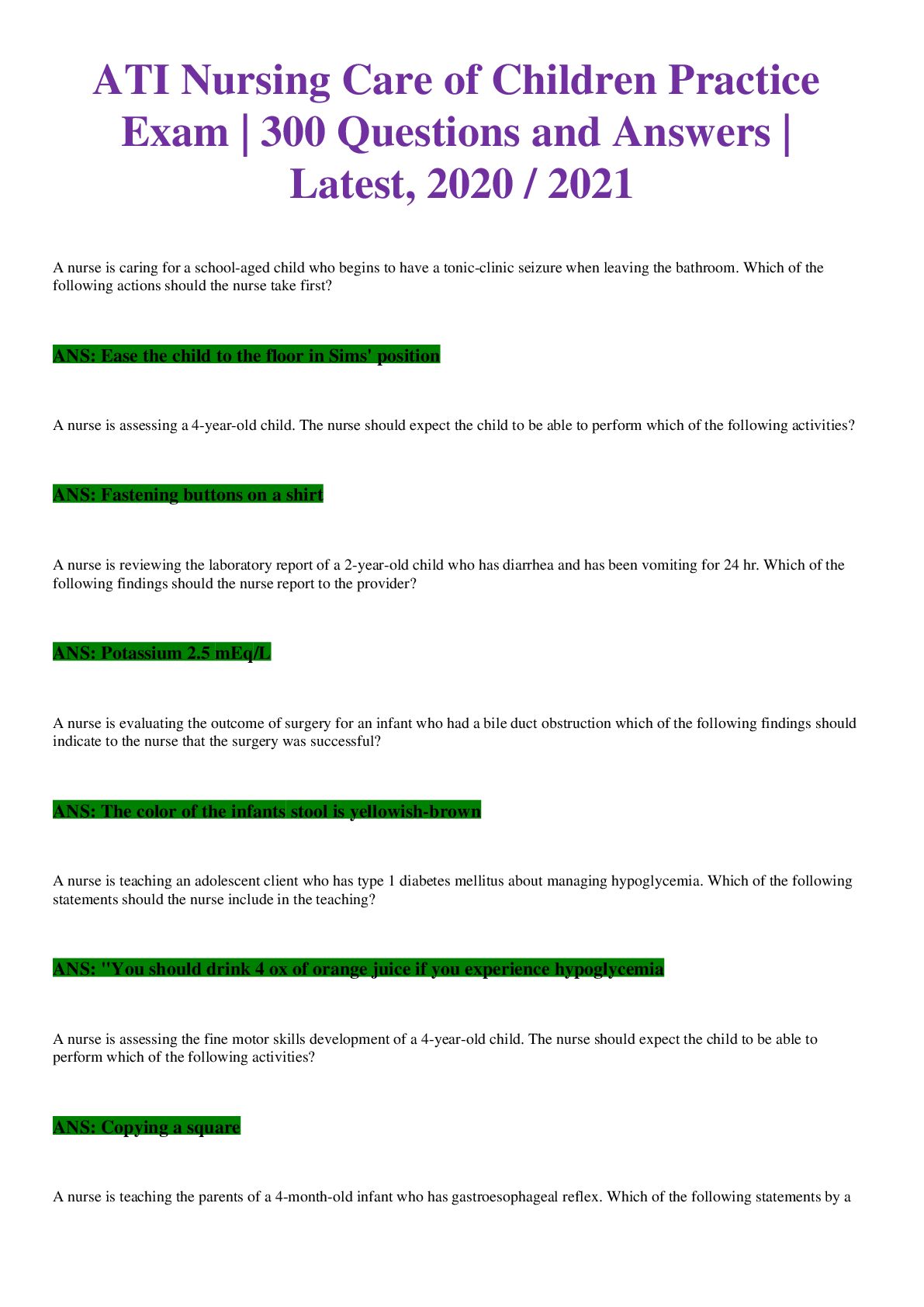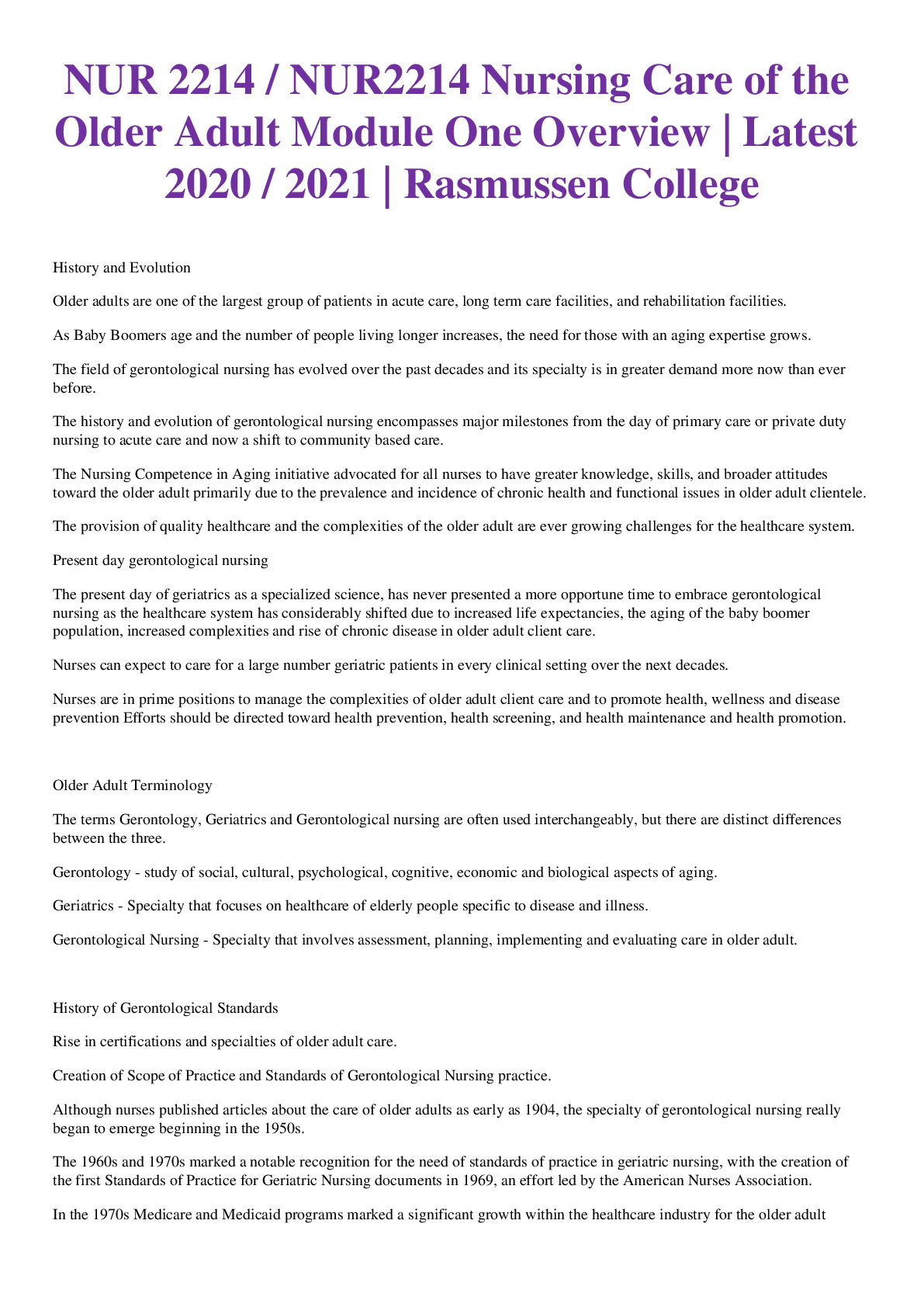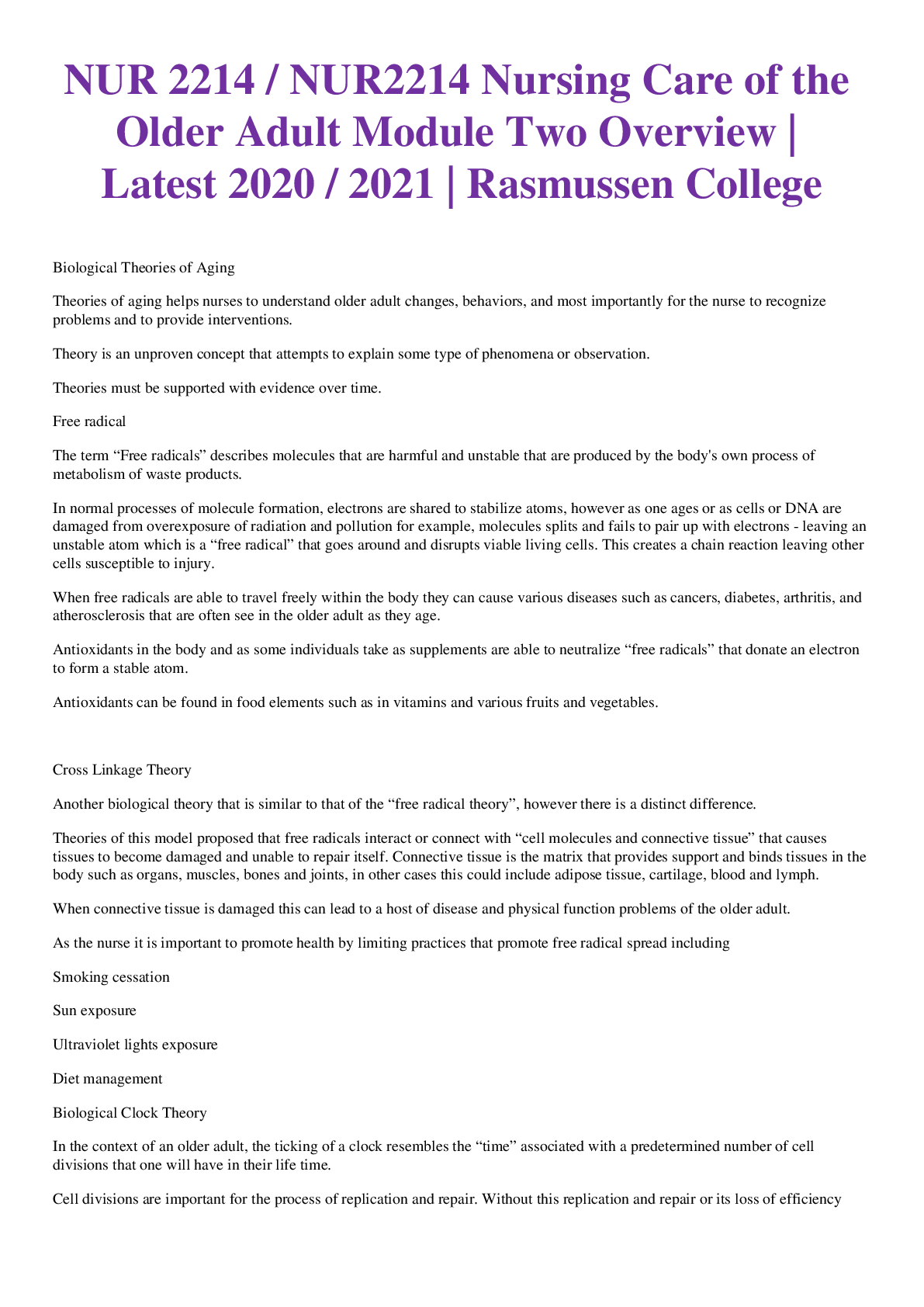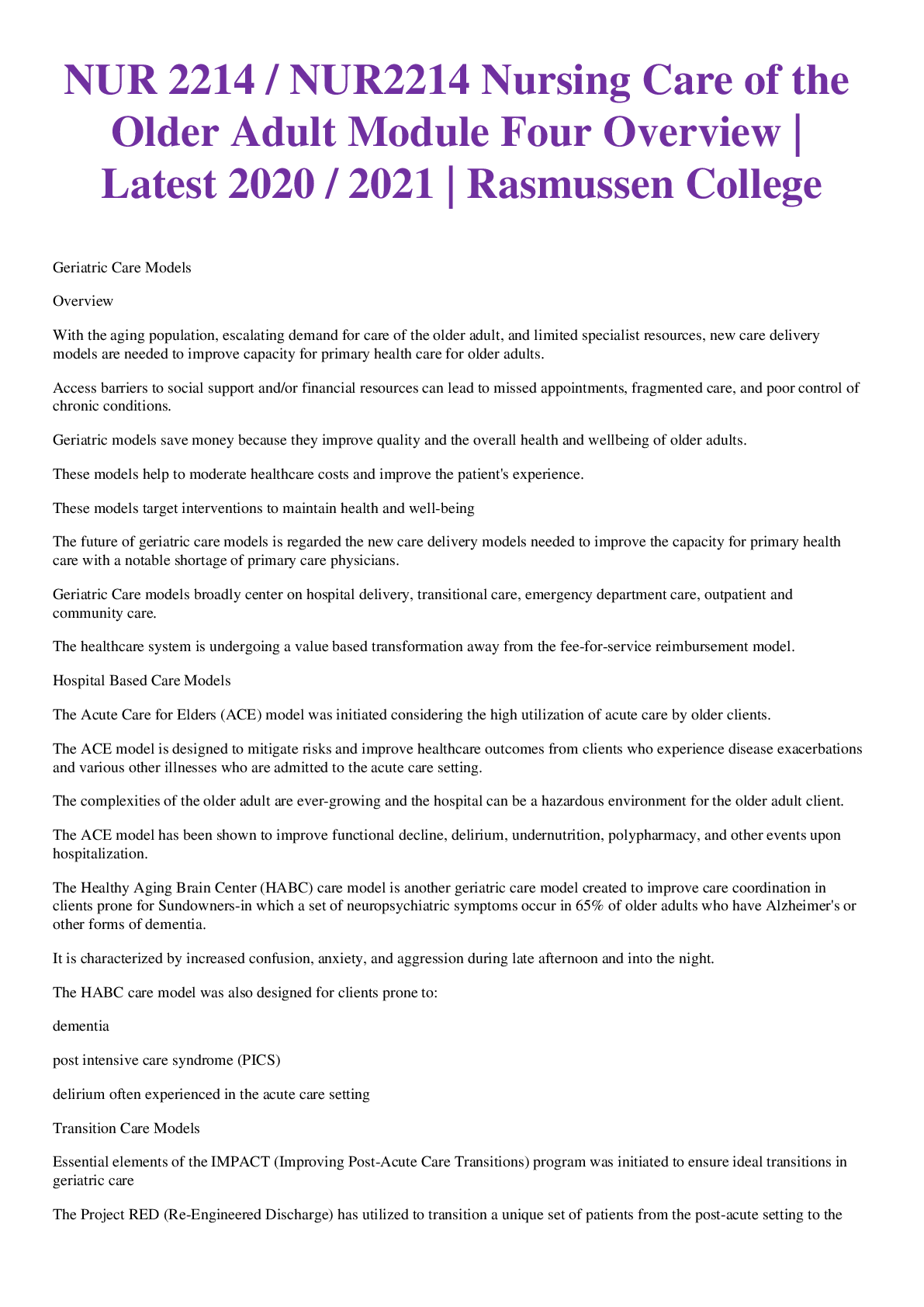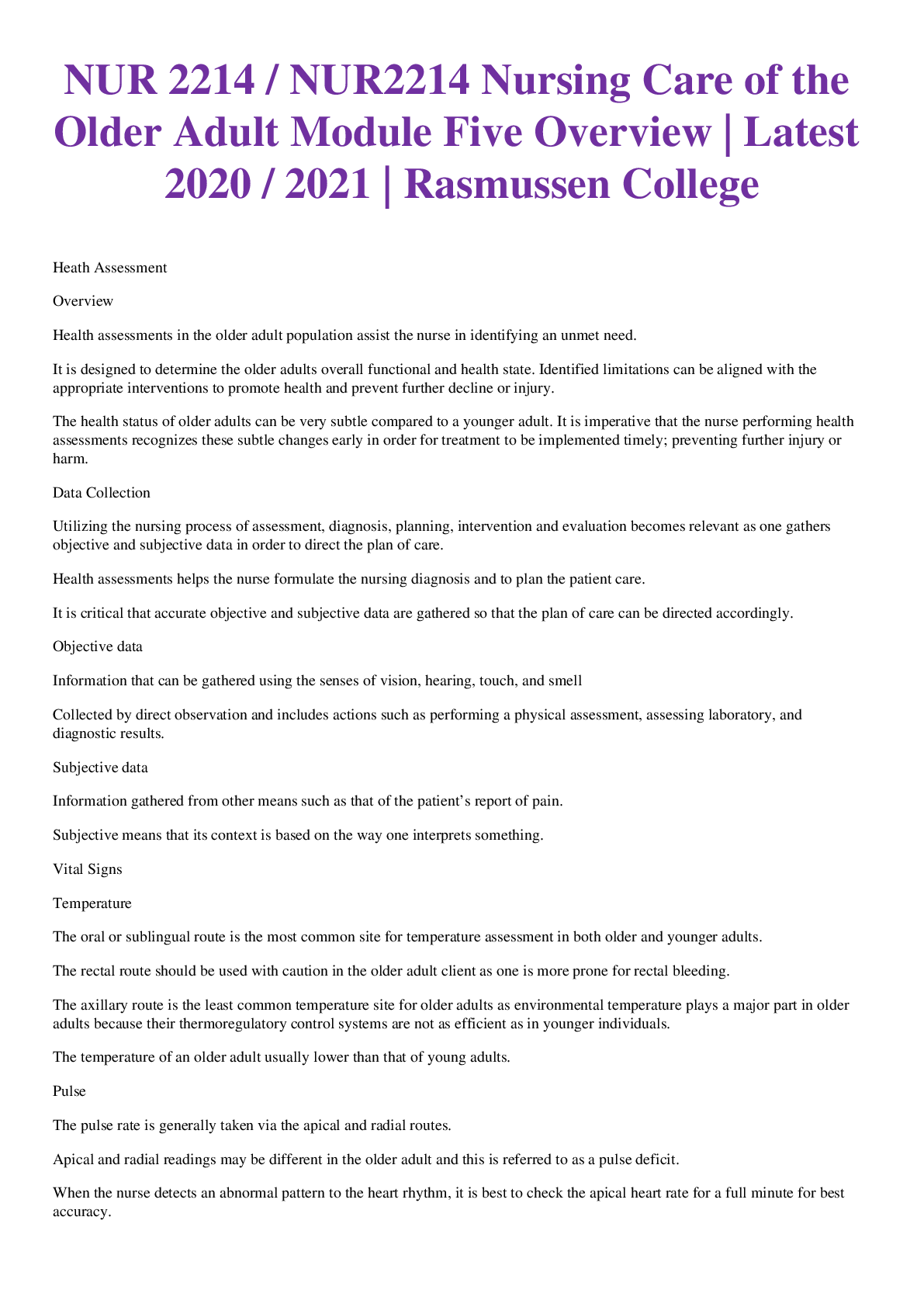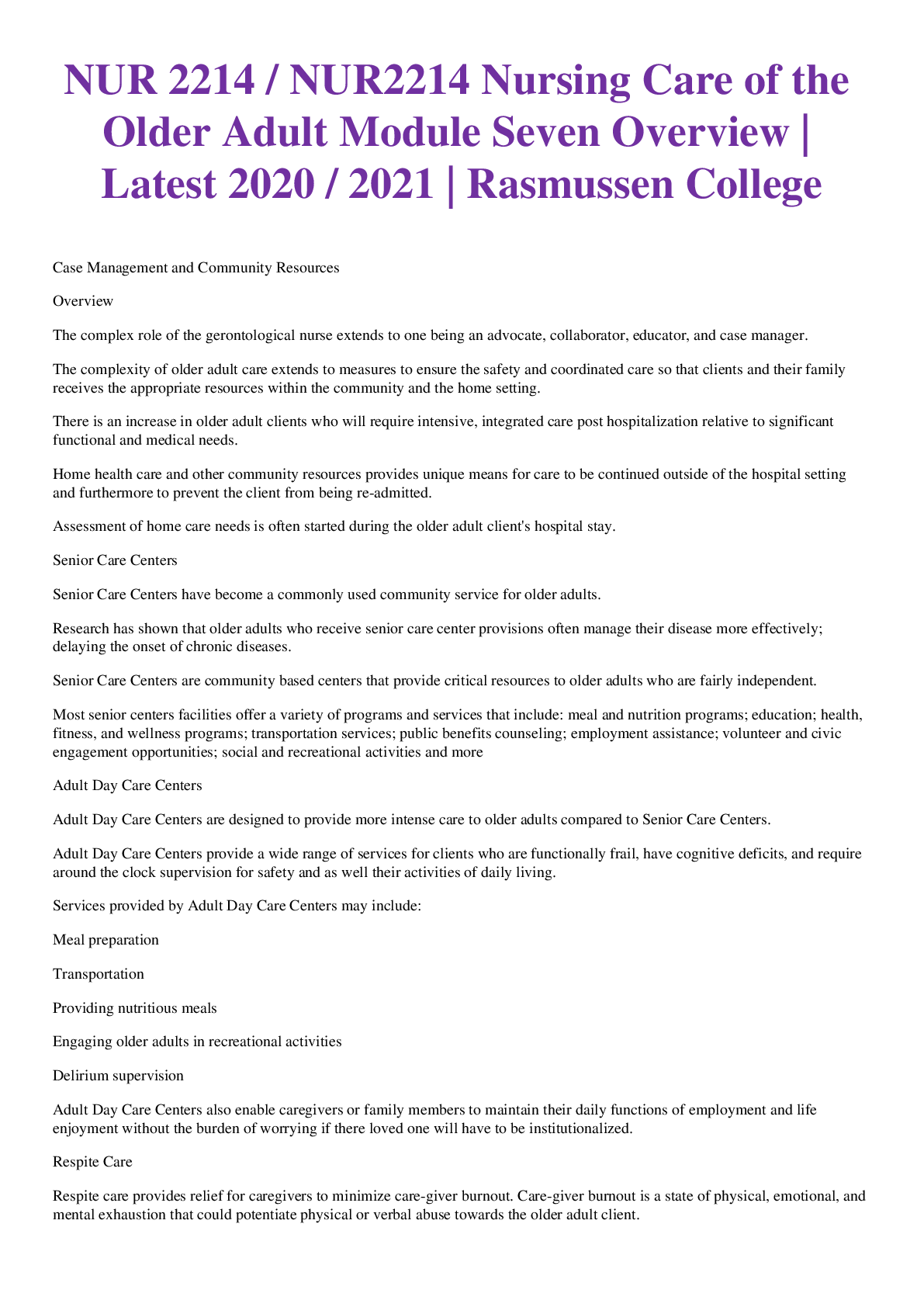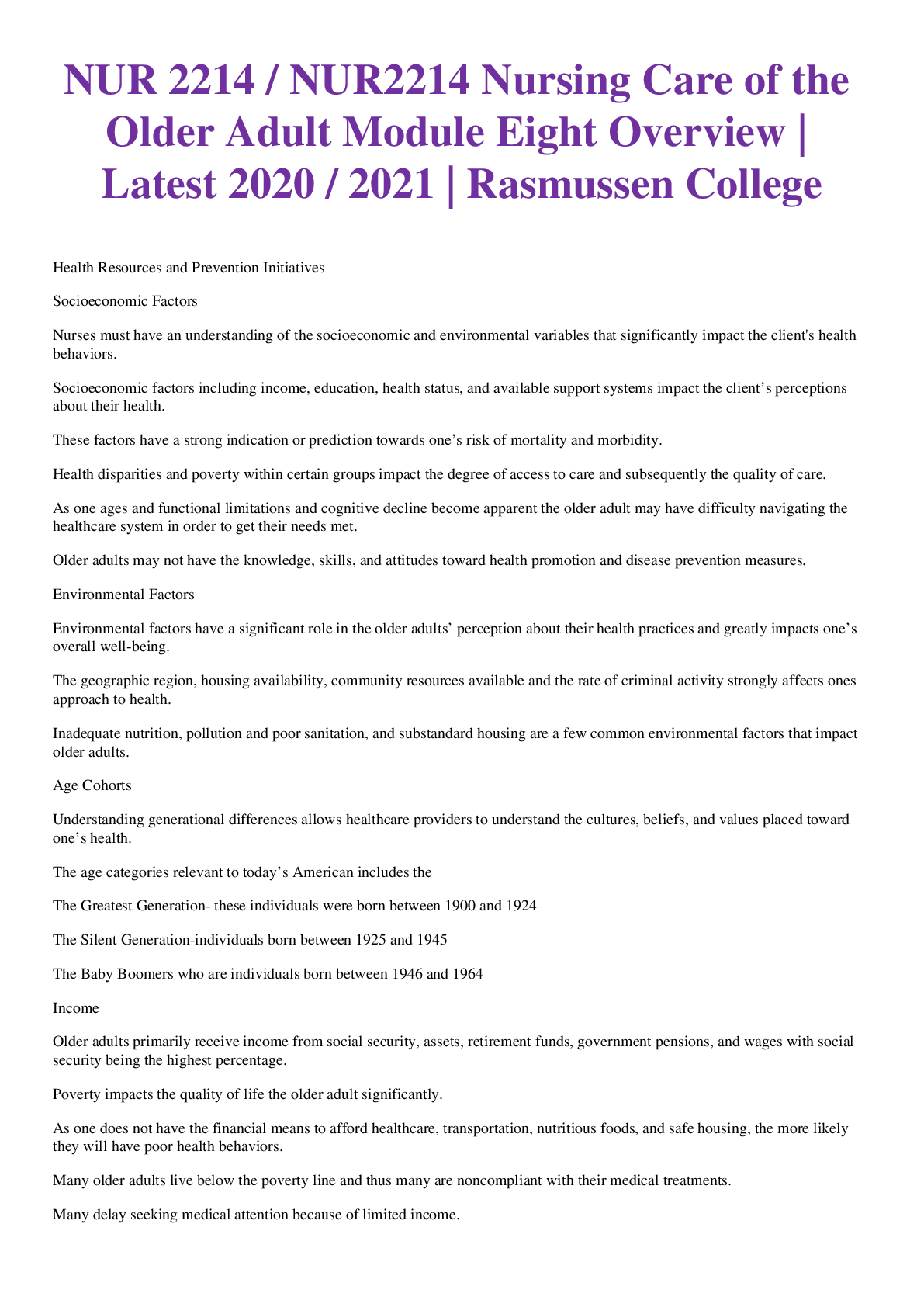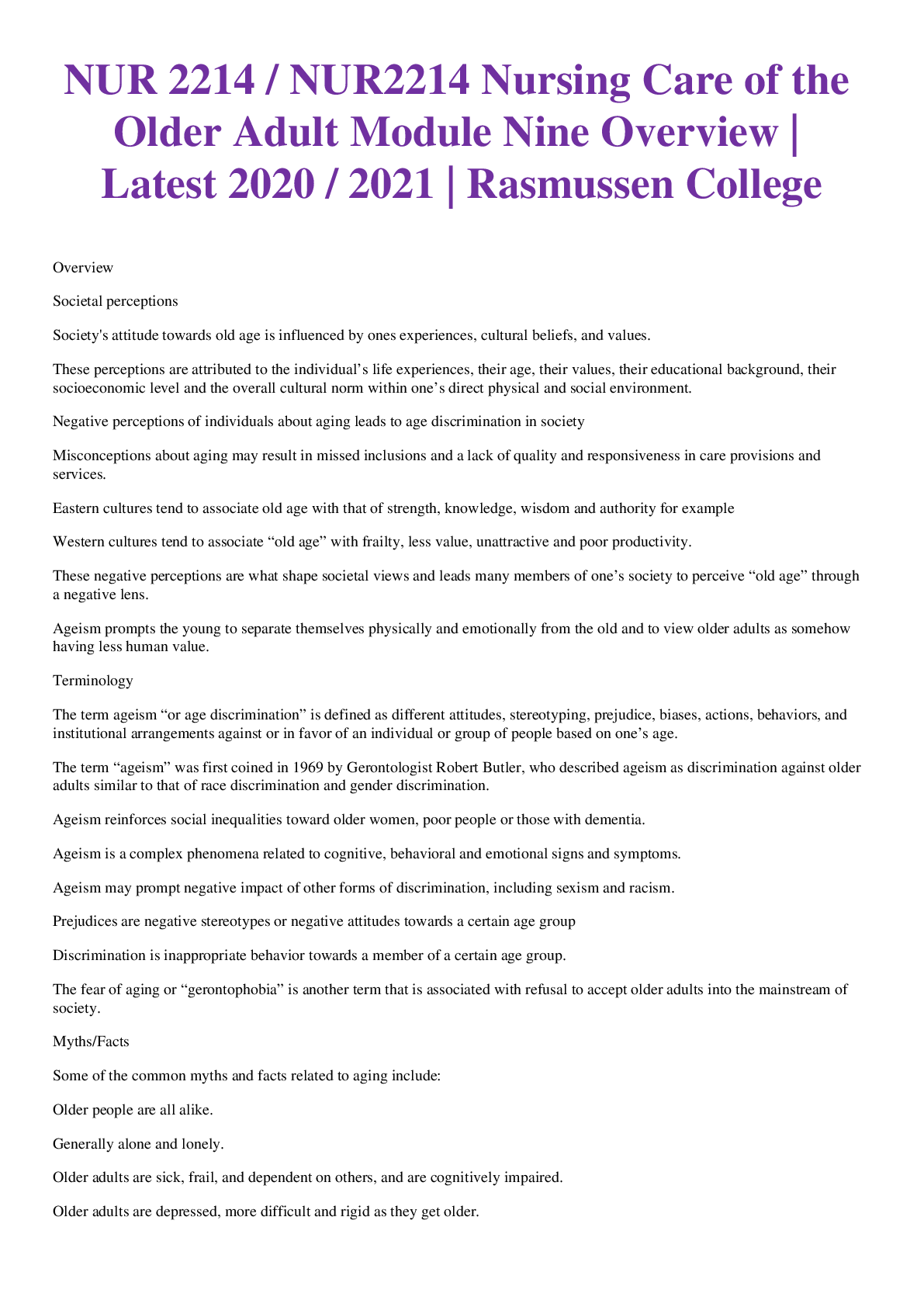Health Care > EXAM > ATI Nursing Care of Children Practice 2019 A: NGN ATI RN Nursing Care of Children Proctored Exam:Q (All)
ATI Nursing Care of Children Practice 2019 A: NGN ATI RN Nursing Care of Children Proctored Exam:Questions & Answers
Document Content and Description Below
A nurse is creating a plan of care for a school-age child who has heart disease and has developed heart failure. Which of the following interventions should the nurse include in the plan? (Ans- prov... ide small, frequent meals for the child The metabolic rate of a child who has heart failure is high because of poor cardiac function. Therefore, the nurse should provide small, frequent meals for the child because it helps to conserve energy. A nurse is teaching the parent of an infant who has Pavlik harness for the treatment of developmental dysplasia of the hip. The nurse should identify that which of the following statements by the parent indicates an understanding of the teaching? (Ans- "I will place my infant's diaper under the harness straps." To prevent soiling of the harness, the parent should apply the infant's diaper under the straps. A nurse is planning care for a school-age child who is in the oliguric phase of acute kidney injury (AKI) and has a sodium level of 129 meq/L. Which of the following interventions should the nurse include in the plan? (Ans- initiate seizure precautions for the child A sodium level of 129 mEq/L indicates hyponatremia and places the child at increased risk for neurological deficits and seizure activity. The nurse should complete a neurologic assessment and implement seizure precautions to maintain the child's safety. A nurse is assessing a school-age child immediately following a perforated appendix repair. Which of the following findings should the nurse expect? (Ans- absence of peristalsis The nurse should expect absence of peristalsis immediately following a perforated appendix repair, until the bowel resumes functioning. A nurse is preparing an adolescent for a lumbar puncture. Which of the following actions should the nurse take? (Ans- apply topical analgesic cream to the site 1hr prior to the procedure The nurse should apply a topical analgesic to the lumbar site 1 hr prior to the procedure to decrease the adolescent's pain while the lumbar needle is inserted. A nurse is caring for a school-age child who is receiving cefazolin via intermittent IV bolus. The child suddenly develops diffuse flushing of the skin and angioedema. After discontinuing the medication infusion, which of the following medications should the nurse administer first? (Ans- epinephrine This child is most likely experiencing an anaphylactic reaction to the cefazolin. According to evidence-based practice, the nurse should first administer epinephrine to treat the anaphylaxis. Epinephrine is a beta adrenergic agonist that stimulates the heart, causes vasoconstriction of blood vessels in the skin and mucous membranes, and triggers bronchodilation in the lungs. A nurse is teaching the parent of a preschooler about ways to prevent acute asthma attacks. Which of the following statements by the parent indicates an understanding of the teaching? (Ans- "I should keep my child indoors when I mow the yard." The nurse should instruct the parent to keep the preschooler indoors during lawn maintenance or when the pollen count is increased. Guarding against exposure to known allergens found outdoors, such as grass, tree, and weed pollen, will decrease the frequency of the preschooler's asthma attacks. A nurse is providing dietary teaching to the parent of a school-age child who has celiac disease. The nurse should recommend that the parent offer which of the following foods to the child? (Ans- white rice The nurse should recommend that the parent offer white rice to the child because it is a gluten-free food. The nurse should instruct the parent that the child will remain on a lifelong gluten-free diet and the child should not consume oats, rye, barley, or wheat, and sometimes lactose deficiency can be secondary to this disease. A nurse is reviewing the laboratory report of a school-age child who is experiencing fatigue. Which of the following findings should the nurse recognize as an indication of anemia? (Ans- hematocrit 28% The nurse should recognize that this hematocrit level is below the expected reference range of 32% to 44% for a school-age child. The child can exhibit fatigue, lightheadedness, tachycardia, dyspnea, and pallor due to the decreased oxygen-carrying capacity. A nurse is preparing to collect a sample form a toddler for a sickle-turbidity test. Which of the following actions should the nurse plant to take? (Ans- perform a finger stick [Show More]
Last updated: 9 months ago
Preview 1 out of 17 pages
Instant download
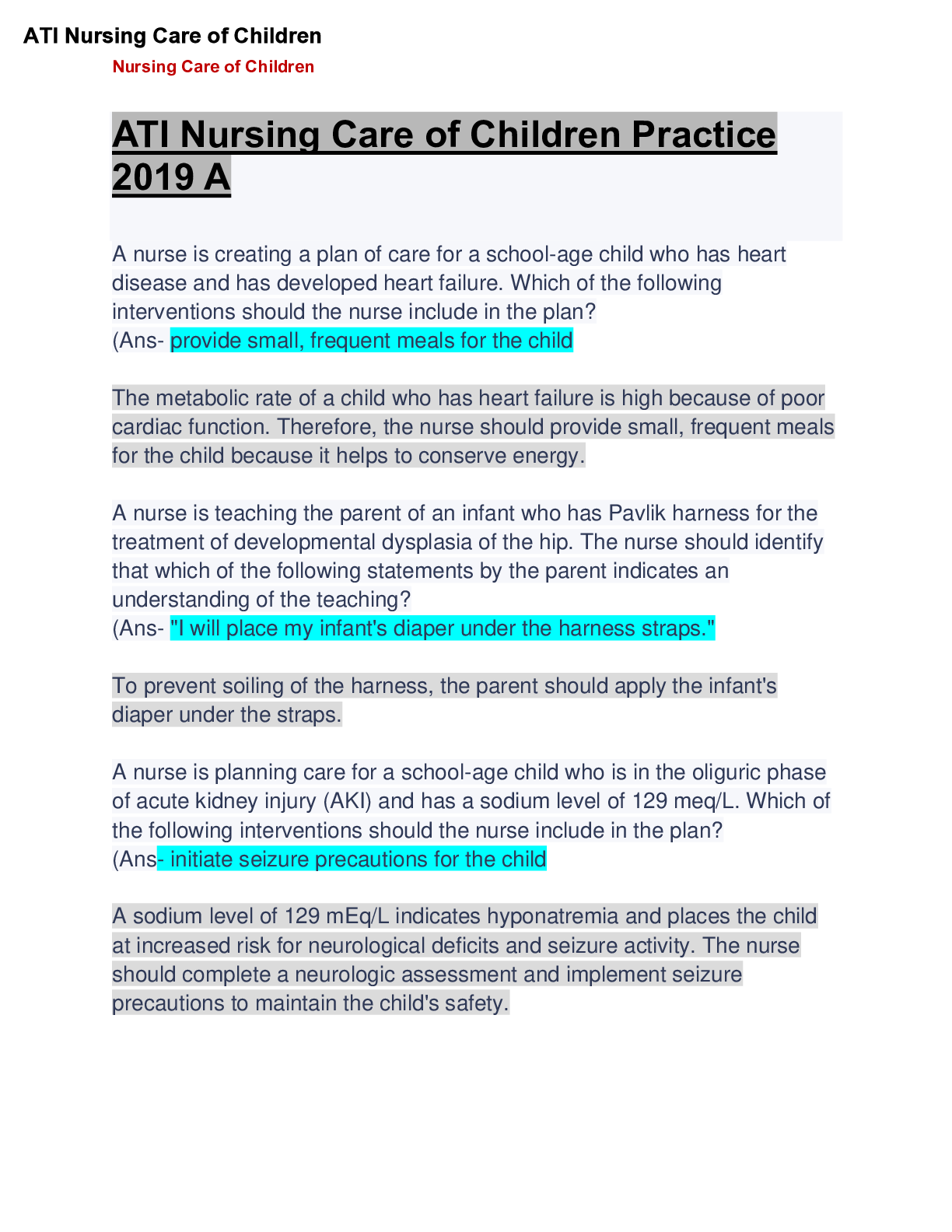
Instant download
Reviews( 0 )
Document information
Connected school, study & course
About the document
Uploaded On
Aug 01, 2023
Number of pages
17
Written in
Additional information
This document has been written for:
Uploaded
Aug 01, 2023
Downloads
0
Views
79



